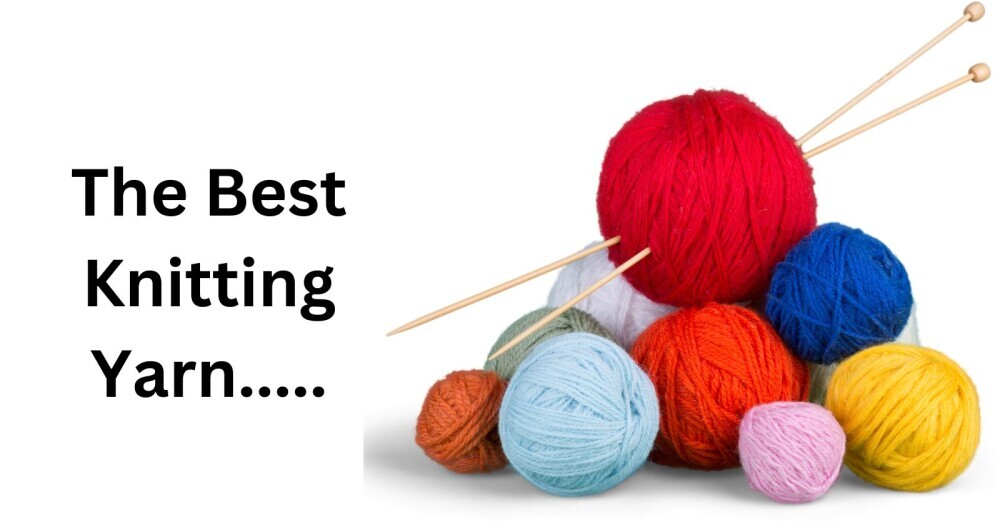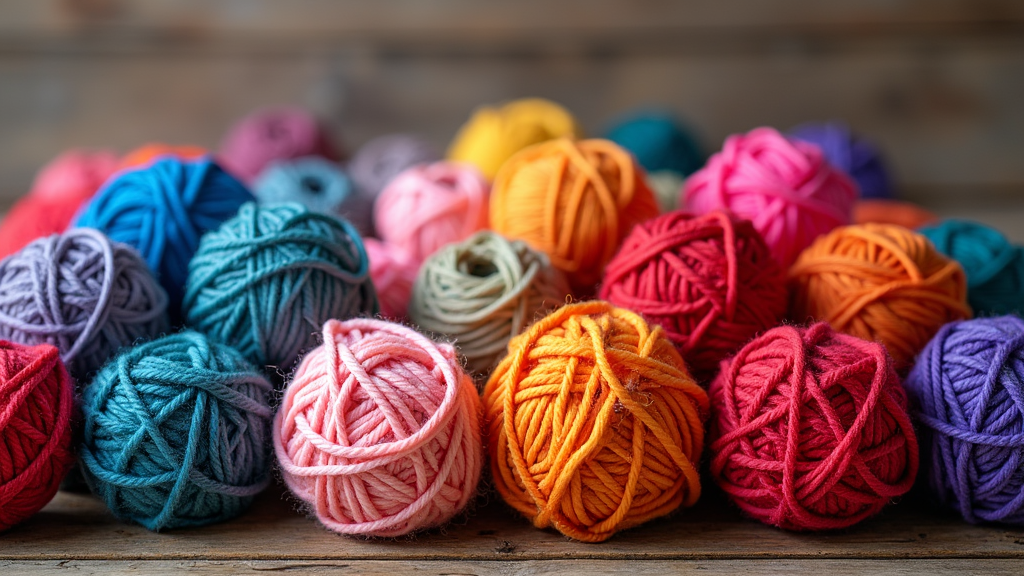Let’s take a look at the best knitting yarn to use for your projects. After all, you are spending time on your creation, so you want it to last.
Knitting is a relaxing art where you create beauty with your own hands. It’s not just about putting stitches together. It’s about choosing materials that reflect your style and bring your ideas to life. When selecting the best yarn, fiber content, texture, and durability are key considerations.
Whether you are making a simple scarf or an intricate sweater, your yarn choice greatly influences the final product. With a bit of insight and smart research, you can pick a yarn that transforms your creative vision into reality. The tips below will help you decide on the ideal yarn for your projects.
This post may contain affiliate links, which means that the owner of this website will get a commission on qualifying purchases.

What to Look for When Choosing Knitting Yarn
Choosing the right yarn involves balancing several factors. First, consider the fiber type. Yarns come in wool, cotton, acrylic, or blends – each offering its own benefits.
Wool is warm and forgiving, cotton feels cool and crisp, while acrylic is durable and budget-friendly. Next, think about texture. Some yarns are smooth for detailed stitch work, and others have a nubby feel that adds character to your design.
It is wise to test small samples and work a gauge swatch. This simple step ensures the yarn behaves as expected and that your finished piece meets your standards.
Color and Texture
The visual appeal of your work depends greatly on color and texture. Color not only sets the mood but also influences the overall style. Some knitters favor bright, bold hues, while others lean toward subtle, muted shades. Think about the atmosphere you want to create in your project.
Texture is just as important. Smooth yarn highlights intricate patterns, whereas more textured yarn adds depth to items like blankets or chunky scarves. Always examine a sample in person if possible, since photos may not capture all details.
Yarn Weight and Gauge And Matching Yarn to Patterns
Your yarn’s weight affects the appearance and feel of the final piece. Yarn weights range from lace to fingering, sport, DK, worsted, and bulky. Patterns usually specify a particular weight to ensure proper drape and dimensions. Always refer to your pattern’s guidance when making a choice.
Gauge – the number of stitches per inch – is equally critical. Knitting a gauge swatch helps you verify that your yarn and technique yield the desired results. This precaution minimizes surprises such as a scarf that ends up too tight or too loose.
Yarn Durability
Durability matters, especially for projects in frequent use. Consider yarn that can withstand washing, wear, and time. Natural fibers like wool might require extra care, while synthetic options such as acrylic are generally easier to maintain. Think about the purpose of your project before selecting your yarn.
Reading product reviews and care instructions is a smart move. Choosing a reliable yarn means your finished piece will remain attractive and useful for many years.
Popular Yarn Brands: Quality and Variety
Many knitters trust established brands like Lion Brand, Red Heart, and Bernat for consistent quality. These companies offer a wide range of options suited to various projects. Whether you prefer classic fibers or modern blends, sticking with reputable brands can simplify your decision-making process.
For those on a budget, value packs, and multipacks provide ample material without overspending. Sampling a smaller skein first is a practical way to ensure that a particular brand suits your style and project requirements.
Natural vs Synthetic Fibers
Deciding between natural and synthetic fibers is an important step. Natural fibers such as wool, cotton, or alpaca are favored for their warmth, breathability, and soft feel, making them ideal for sweaters, scarves, and baby garments.
Synthetic fibers like acrylic tend to be more affordable and easier to care for. They are available in a wide array of colors and textures and sometimes are blended with natural fibers to offer a balanced performance. Consider the function of your finished piece before making your choice.
Eco-Friendly and Novelty Options
After mastering the basics, you might want to experiment with specialty yarns. These include eco-friendly options made from recycled or organic fibers, hand-dyed skeins with unique color shifts, and novelty fibers that offer an unexpected twist. Specialty yarns can turn an ordinary project into something truly personal.
Always check care guidelines and pattern compatibility when using specialty yarns, as they may require extra attention. Their distinctive textures and finishes can make your work stand out in a crowd.
Storage and Maintenance
Proper storage is key to maintaining the quality of your yarn. Keep your skeins in sealed containers or bags to guard against dust, moisture, and pests. Organizing your yarn by color or fiber type can also help you find what you need quickly when inspiration strikes.
While working, be sure to use the correct needle size for your yarn to prevent stitches from becoming too tight or too loose. Following the manufacturer’s care instructions for washing or blocking your finished pieces will help preserve their beauty over time.
Getting Great Yarn Without Overspending
Quality yarn is not always expensive. Look for sales, clearance sections, or online deals to purchase high-quality yarn at a more affordable price. Consider buying multipacks or bulk bundles for additional savings.
Local knitting groups and craft fairs can also be treasure troves for budget-friendly finds. By planning your projects around available deals, you can enjoy the creative process without breaking the bank.
Final Thoughts
Every knitting project is an adventure, and the yarn you choose is a trusted companion throughout. Taking the time to research and select a yarn that meets your needs can improve both the appearance and longevity of your work.
The right yarn takes up a notch your projects from simple crafts. It turns them into creations that truly reflect your creativity and care. As you check out the many options available. Whether you’re opting for natural fibers with a soft touch or vibrant synthetic alternatives, detailed attention to quality, durability, and care will pay off in the end.
I hope these insights give you clear direction in choosing the very best knitting yarn. Each project offers a chance to learn and refine your skills. Enjoy the process, and may your stitches always come out perfectly.
Which yarn has worked best for you? Feel free to share your thoughts and experiences as you continue on your knitting adventures.

-Knitting; a topic that is underspoken. 😉
-I enjoyed reading this article about the yarn; shows how much of a difference it makes.
-It’s actually not an understatement that if you’re going to choose to knit a sweater or scarf or something like that, you will need to choose the right material from the get-go before you get started. I know I would want to be able to trust it as much as possible once it’s complete.
-Wool might be be a good material for me; but cotton in a generous amount seems like the right choice for yours truly.
-I’m not all that familiar with knitting gauges until after this post but I have some idea of it.
-Overall, the rest of the stuff seems pretty comprehensive; the weight, the textures and such.
-Much appreciated,
ALEJANDRO G.